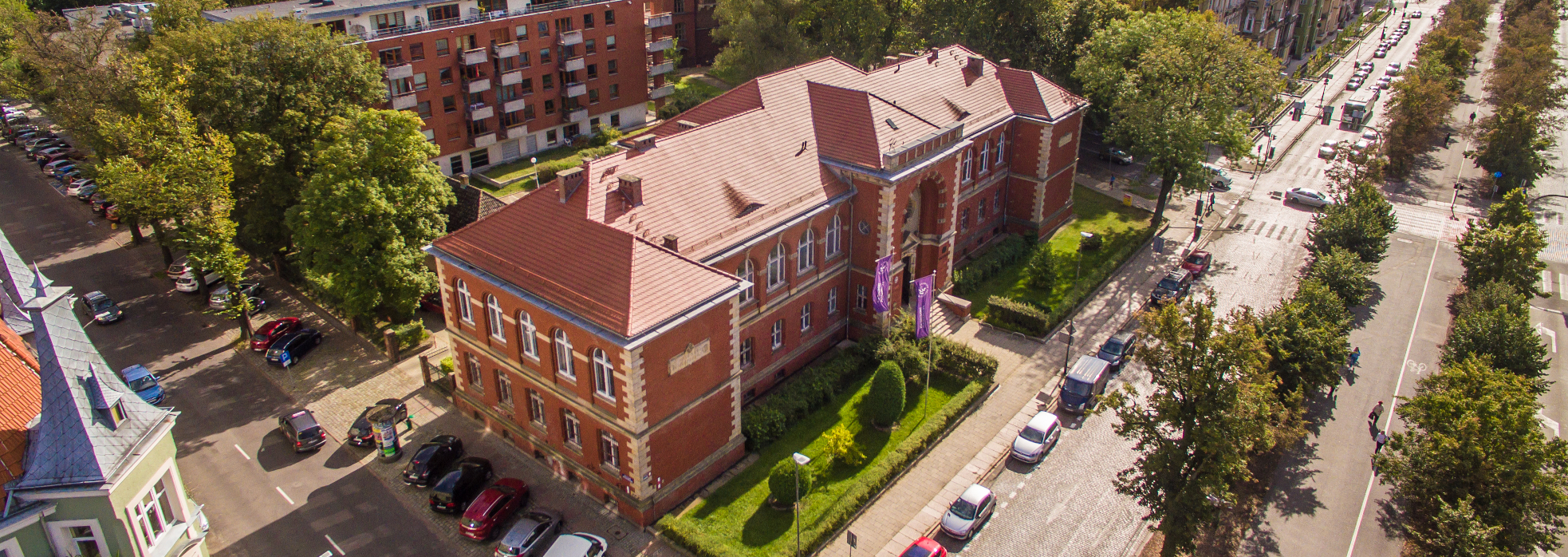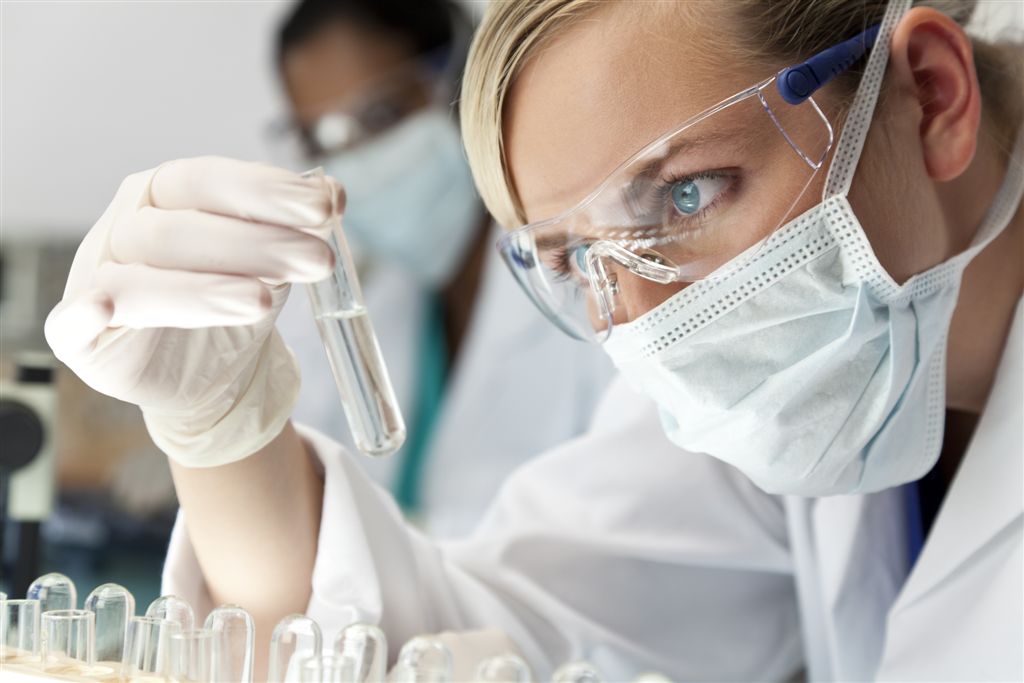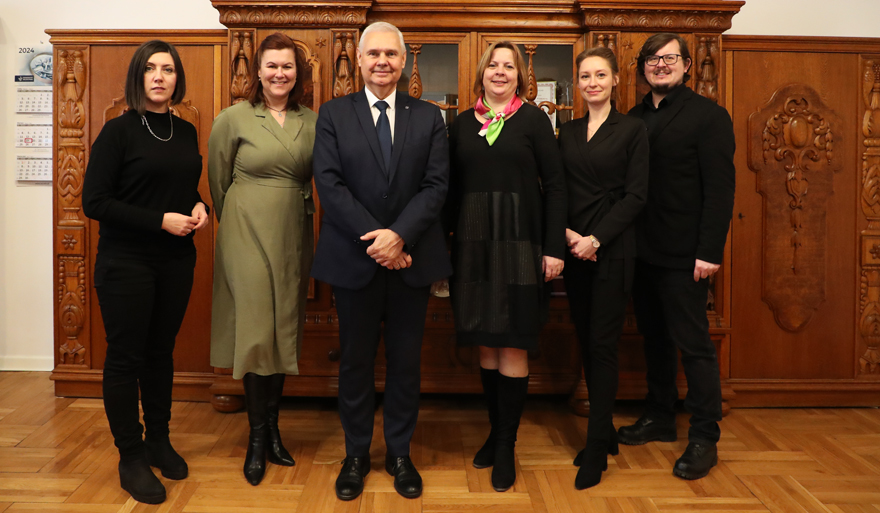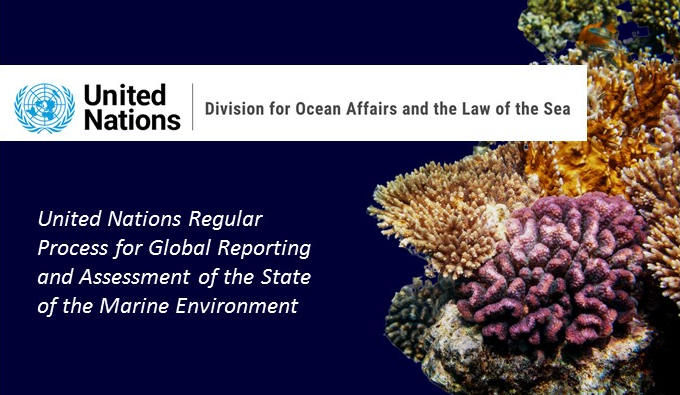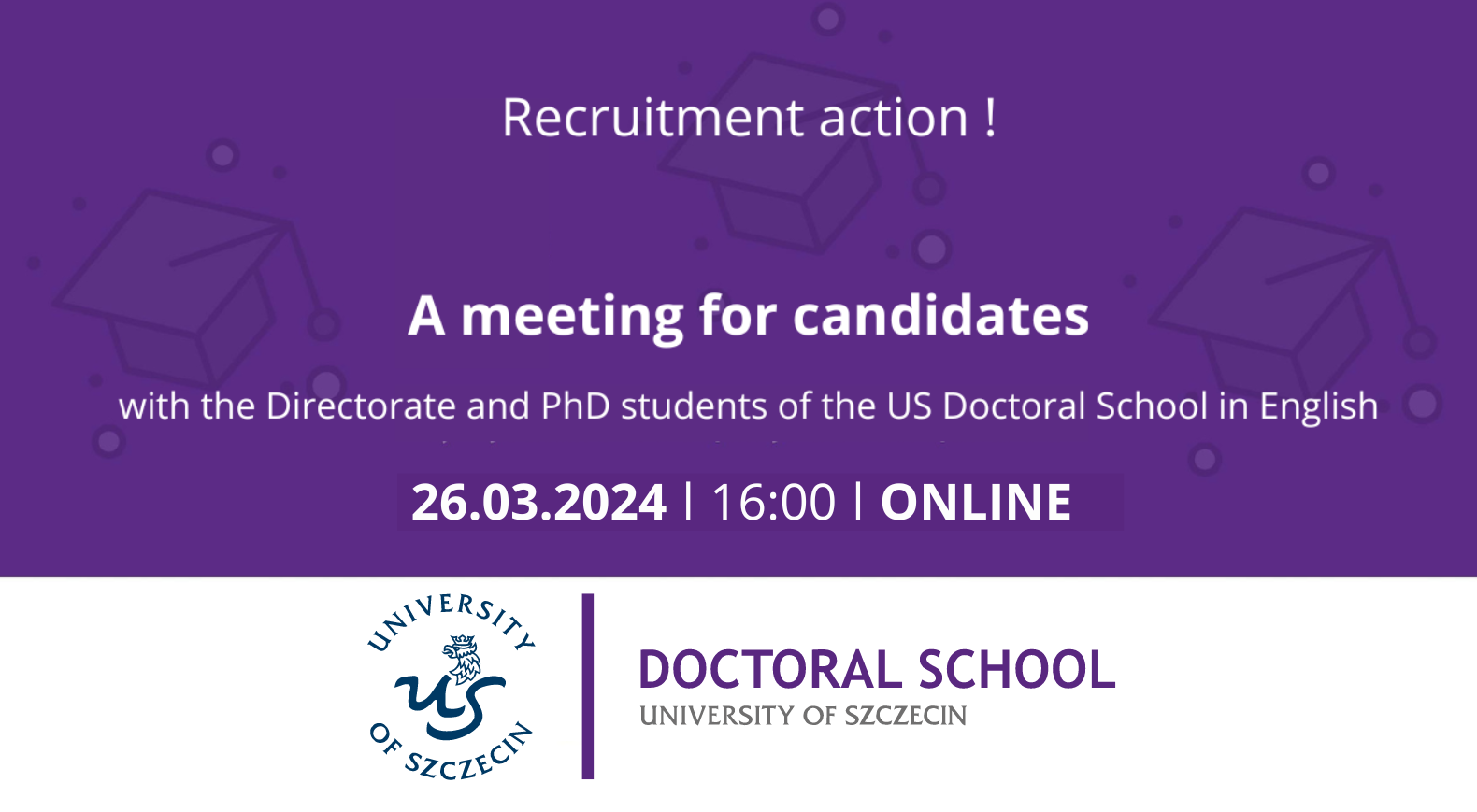Institute of Biology is the only scientific unit in Szczecin with full academic rights in the discipline of biological sciences. In the structure of the university, the Institute in its current form was established on 1.10.2019 and constitutes another link in the 35-year history of scientific activity in biology. When the University of Szczecin was founded, the structure of the university was co-founded by the Faculty of Biology and Marine Sciences, which later became the Faculty of Natural Sciences (1992) and then the Faculty of Biology (2012). Thanks to the efforts of the academic staff, the Faculty of Natural Sciences obtained the right to confer the degree of doctor of biology in 1998 and the right to confer the degree of doctor habilitated in biology in 2002.
Find out more
-
Our Staff
The main core of the Institute’s academic staff of over 60 people is made up of scientific and scientific research staff: professors, university professors, adjuncts with habilitation, adjuncts and assistants. Additionally, the Institute’s scientific staff is supplemented by teaching staff: senior lecturers and lecturers as well as scientific and engineering and technical staff.
Research and Teaching Staff
Assoc. Prof. Magdalena Achrem
Assoc. Prof. Małgorzata Adamska
Aleksandra Bańkowska, MSc
Dominika Bębnowska, MSc
Dr Małgorzata Blatkiewicz, MD
Dr Anna Bucior-Kwaczyńska
Dr Danuta Cembrowska-Lech
Prof. Robert Czerniawski
Assoc. Prof. Wioleta Dudzińska
Assoc. Prof. Katarzyna Dziewulska, Prof. of the University of Szczecin
Dr Eng. Ewa Filip
Assoc. Prof. Agnieszka Grinn-Gofroń, Prof. of the University of Szczecin
Rafał Hrynkiewicz, MSc
Assoc. Prof. Beata Hukowska-Szematowicz, Prof. of the University of Szczecin
Assoc. Prof. Łukasz Jankowiak, Prof. of the University of Szczecin
Dr Anna Kalinka
Piotr Karczyński, MSc
Prof. Ewa Kępczyńska
Prof. Jan Kępczyński
Dr Lucyna Kirczuk
Dr Tomasz Krepski
Dr Paulina Król
Dr Zbigniew Kwieciński
Dr Andrzej Łysko
Dr Agnieszka Maruszewska
Assoc. Prof. Paulina Niedźwiedzka-Rystwej, Prof. of the University of Szczecin
Dr Anna Orłowska
Dr Michał Polakowski
Dr Agata Poniewierska-Baran
Prof. Agnieszka Popiela
Assoc. Prof. Ewa Rębacz-Maroń, Prof. of the University of Szczecin
Kinga Rybak, MSc Eng.
Assoc. Prof. Anna Rymaszewska, Prof. of the University of Szczecin
Dr Katarzyna Sielatycka
Prof. Bogumiła Skotarczak
Dr Eng. Ewa Skotnicka
Assoc. Prof. Lidia Skuza, Prof. of the University of Szczecin
Dr Łukasz Sługocki
Assoc. Prof. Marianna Soroka, Prof. of the University of Szczecin
Dr Izabela Szućko
Prof. Jolanta Tarasiuk
Assoc. Prof. Beata Tokarz-Deptuła, Prof. of the University of Szczecin
Dr Alicja Trzeciak-Ryczek
Barbara Wąsowicz, MSc
Assoc. Prof. Beata Wodecka, Prof. of the University of Szczecin
Agata Wszołek, MSc Eng.Engineering and technical staff
Karolina Beker, MSc
Mateusz Bocian, MSc
Elżbieta Dacka, MSc
Ewa Gieda
Iwona Goździk, MSc
Ewa Górecka, MSc
Beata Kiriaka, MSc Eng.
Anna Kompowska, MSc Eng.
Adam Kordun
Marta Krzywda, MSc
Agata Kulińska, MSc
Bartosz Kurnicki, Msc
Patrycja Rakowska, Msc
Anna Sielska, BSc
Bożenna Żukowska, MSc Eng.
-
Our Research
Projects
A new modelling for pollen and allergen emission dynamics.
The aim of the project is to monitor Ambrosia pollen and Amba1 allergen potential for causing allergies in order to decide whether these allergens should be included in the skin test panels.
Project partners: Ankara Üniversitesi, Turkey
CA18226 – New approaches in detection of pathogens and aeroallergens
The goal of the project is to establish an interdisciplinary network of experts currently involved in the detection of bioaerosols using both existing methods as well as upcoming technologies such as real or near real-time technologies from atmospheric chemistry and physics or eDNA methods used in molecular biology. A main objective is to critically address the barriers that limits the penetration of new methods in detection of bioaerosols. The COST action will stimulate both research and technological development, e.g. by developing approaches for integration of multiple methods for detecting bioaerosols and how to handle data using numerical approaches in a big data environment by using fungal spores and pollen as examples. More information
Ekologia wiosennego postoju migracyjnego gęsi. Ecology of the spring migration stopover of geese
Project partners: Goose Specialist Group, Institute for Wetlands and Waterbird Research e.V. Germany, The Siedlce University of Natural Sciences and Humanities, University of Gdańsk
More information
Polimorfizm regionu kontrolnego mitochondrialnego DNA mieszkańców województwa zachodniopomorskiego. Polymorphism of mtDNA control region of the inhabitants of the West Pomerania region.
The aim of the project is to determine the level of genetic diversity of the population of the West Pomeranian Voivodeship and to compare the results with the literature data for Poland and the whole of Europe.
Badania genetyczne szczątków ludzkich z krypty Petera Groeninga w kościele NMP Królowej Świata w Stargardzie. Genetic studies of human remains burried in the crypt of Peter Groening in Church of the Blessed Virgin Mary, Queen of the World in Stargard, Poland.
Genetic research will allow to confirm the identity of human remains excavated from the crypt, determine the biogeographic origin by analyzing the mtDNA and Y chromosome. If possible, analysis of the nuclear genome and phenotyping analyzes will also be performed, allowing for the reconstruction of the faces of the deceased.
Expression characteristics and regulatory mechanism of differential protein in hyperaccumulator highly extracting heavy metal under different ecotypes.
Project partners: Shaanxi University of Technology, Chaoyang Road, Hanzhong City, Shaanxi Province, China.
Sekwencjonowanie i analiza sekwencji genomów organellowych (cpDNA i mtDNA) gatunków z rodzaju Secale. Sequencing and sequence analysis of organelle genomes (cpDNA and mtDNA) of Secale species.
Project partners: University of Warmia and Mazury in Olsztyn
Aims of the project: obtaining the sequence of organelle genomes of rye species, developing the systematics of rye species based on the analysis of organelle genomes.
Barkoding DNA wodopójek (Acari: Hydrachnidia). DNA barcoding of water mites (Acari: Hydrachnidia)
Aim of the project is molecular analysis of water mites species, genetic identification and creating water mites DNA barcodes database.Research Areas
Aerobiology: predictive modelling of concentrations and seasons of spores in the air and correlations of their composition with land use, meteorological parameters and air pollution and molecular analyses of allergenic proteins and their properties.
Green Biotechnology: induction of Medicago spp. somatic embryogenesis, induction of plant resistance to pathogens and explanation of the mechanism of promoting plant growth by rhizobacteria at physiological, biochemical and molecular level. Experiments carried out within the framework of the above mentioned issues concern various organisms: bacteria, fungi and plants and are conducted in vitro and in vivo conditions. These studies use microscopic analyses of plant and microbiological material, analyses of enzyme activity (including stress markers) by spectrophotometric methods, quantitative determination of carbohydrate and phenolic compounds content by chromatographic methods and gene expression analyses using modern techniques of molecular biology.
Botany: research concerns taxonomy, phytogeography, ecology and risk assessment of West Pomeranian plant and fungi species, including valuable, rare and threatened with extinction taxa.
Physiology: the tasks are related to purine metabolism, energy metabolism and prooxidative status of erythrocytes of animals and humans in various physiological and pathological states, as well as exposure to environmental factors. The work also concerns the mineral and lipid profile as well as haematological changes in humans and animals as a result of the influence of nutritional and environmental factors. Research is also conducted on the influence of physical effort on disorders of systemic homeostasis and changes in aerobic and anaerobic performance of athletes, as well as on the influence of cryogenic temperatures on adaptation changes and selected human physiological and biochemical indicators.
Physiology and Genetic Engineering of Plants. Research is focused on explaining the mechanism of hormonal and non-hormonal regulation of resting and germination of seeds. The research concerns, among others, determination of the role of carriquinolide and ethylene, gibberellins or abscytic acid in the control of seed dormancy and germination, analysis of the molecular basis of metabolism and perception of phythormones that control the disappearance of seed dormancy, detection of the role of reactive oxygen and nitrogen forms in seed dormancy control.
General and Molecular Genetics: research is related to the molecular biology of tick-borne pathogens and mollusc population genetics. In recent years, research has been extended to other issues, such as pathogenic protozoa, the human and mollusc mitochondrial genome and the analysis of biological material of animal origin for forensic purposes.
Hydrobiology: biology and ecology of fish, including the biological basis for the recovery of fish populations in the Baltic Sea drainage basin, the biology and ecology of zooplankton of rivers and lakes, benthic macro-vertebrates and rheophilous invertebrates. Histological studies concern the structure of aquatic animal tissues. Research also concerns the biology and biotechnology of fish semen (cryopreservation of sperm, development of cryopreservation procedures, gametes cryobanking). Research topics also include the biology, ecology and protection of small rivers and streams, and assessment of the impact of anthropogenic transformations on aquatic communities.
Microbiology and Immunology: research concerns bacteria and viruses in the environment, including water, and immunity in rabbits infected with RHD and chlamydia.
Research Teams
Department of Hydrobiology conducts research in the field of: biology, ecology and protection of small rivers, streams and lakes; restitution and protection of migratory fish; histological structures of aquatic animal tissues; biology and biotechnology of fish semen and fish parasitology.
Prof. Robert Czerniawski
phone +48 91 444 1624,
e-mail: robert.czerniawski@usz.edu.pl
Plant Biotechnology Team is involved in green biotechnology research on explaining at physiological, biochemical and molecular level processes related to the induction of somatic embryogenesis, promotion of plant growth by soil bacteria and induction of plant resistance against plant fungal pathogens. Sub-disciplines: plant physiology, plant biochemistry, plant microbiology.
Prof. Ewa Kępczyńska,
phone: +48 91 444 1693,
e-mail: ewa.kepczynska@usz.edu.pl
Molecular Biology Team conducting research in molecular biology, classical and molecular cytogenetics, epigenetics and proteomics. The objective of the research is, among others, analysis of the structure of nuclear genomes and organelles of plants and animals, analysis of epigenetic changes in plant genomes, analysis of gluten proteins, analysis of the influence of nano-elements on aquatic organisms, analysis of mechanisms of natural hyperaccumulation and hypertolerance of plants to heavy metals.Sub-discipline: agriculture and horticulture
Assoc. Prof. Lidia Skuza, Prof. of the University of Szczecin
phone: +48 91 444 1535,
e-mail: lidia.skuza@usz.edu.pl
Plant Therapeutic Potential Research Group conducts research in the field of cancer cell biology and phytotherapy. The objective of the group is to anlyze the anticancer potential of extracts from selected domestic plants, which are listed in VI- and VII-century Polish herbal medicinal plant studies.
Dr Agnieszka Maruszewska
phone: +48 91 444 1554,
e-mail: agnieszka.maruszewska@usz.edu.pl
Aerobiology and Zoology of Vertebrates with Anthropology Research Team carries out research in the field of aerobiology, ecology, behavioural ecology, anthropology.
Assoc. Prof. Łukasz Jankowiak, Prof. of the University of Szczecin
phone: +48 91 444 1570,
e-mail: lukasz.jankowiak@usz.edu.pl
Physiology Research Team is analyzing the effect of systemic cryogenic temperatures as a stimulus factor on purine nucleotide metabolism, pro- and anti-inflammatory cytokine profile, as well as quantitative changes in T and B lymphocytes and subpopulations of auxiliary and suppressor lymphocytes, and analyzing the effect of increased fat deposits on cardiovascular risk and vascular endothelial dysfunction in young women with normal body weight.
Assoc. Prof. Wioleta Dudzińska,
phone: +48 91 444 1597,
e-mail: wioleta.dudzinska@usz.edu.pl
Infectious and Molecular Biology and Immunology Research Team varies out research in determining the role of microRNA molecules in the course of infectious and environmental diseases. The objective of the research is, among other things, to evaluate immunological processes occurring in pathological conditions in mammals and to use in silico analyses to identify phenomena occurring at the molecular level in RNA and DNA viruses.
Assoc. Prof. Beata Hukowska-Szematowicz, Prof. of the University of Szczecin
phone” +48 91 444 1592,
e-mail: beata.hukowska-szematowicz@usz.edu.pl
Infectious and Neoplastic Diseases Experimental Immunology and Immunobiology Research Team carries out its research concerning immunological phenomena relevant to the course of viral infections, such as Lagovirus europaeus. The objective of the research is, among other things, to assess the correlation of immune system reactions to the development of cancer, mainly mediated by viral infections (EBV, HPV) and the role of selected immunological indicators (including TLR, CD200, PD-1, PD-L1) as markers of infection.
Assoc. Prof. Paulina Niedźwiedzka-Rystwej, Prof. of the University of Szczecin
phone: +48 91 444 1593,
e-mail: paulina.niedzwiedzka-rystwej@usz.edu.pl
Physical Effort Biology and Cell Regulation Research Team is an interdisciplinary team combining physical culture sciences, medical sciences and biological sciences. Key projects are the analysis of selected cellular signalling pathways triggered by different types of physical exertion and the application of in silico analyses in search of new models in basic research (synthetic biology).
Dr Danuta Cembrowska-Lech
phone: +48 91 444 1611
e-mail: danuta.cembrowska-lech@usz.edu.plThe Center of Molecular Biology and Biotechnology
-
Scientific Board
Chaiperson: Assoc. Prof. Lidia Skuza, Prof. of the University of Szczecin
Prof. Robert Czerniawski
Prof. Agnieszka Popiela
Assoc. Prof. Katarzyna Dziewulska,Prof. of the University of Szczecin
Assoc. Prof. Agnieszka Grinn-Gofroń, Prof. of the University of Szczecin
Assoc. Prof. Łukasz Jankowiak, Prof. of the University of Szczecin
Assoc. Prof. Ewa Rębacz-Maron, Prof. of the University of Szczecin
Assoc. Prof.Marianna Soroka, Prof. of the University of Szczecin
Assoc. Prof. Beata Tokarz-Deptuła, Prof. of the University of Szczecin
Assoc. Prof. Magdalena Achrem
Assoc. Prof. Wioleta Dudzińska
Dr Eng. Ewa Filip
Dr Anna Kalinka
Dr Tomasz Krepski
Dr Agnieszka Maruszewska
Dr Agata Poniewierska- Baran
Dr Łukasz Sługocki
Dr Alicja Trzeciak- Ryczek -
Scientific Papers
Yang W., Dai H., Skuza L., Wei S., The front-heavy and back-light nitrogen application mode to increase stem and leaf biomass significantly improved cadmium accumulation in Solanum nigrum L. 2020. Journal of Hazardous Materials. 200 pkt. IF=9.038
Grinn-Gofroń A., Nowosad J., Bosiacka B., Camacho I., Pashley C., Belmonte J., De Linares C., Ianovici N., Maya Manzano J.M., Sadyś M., Skjøth C., Rodinkova V., Tormo-Molina R., Vokou D., Fernández-Rodríguez S., Damialis A., Airborne Alternaria and Cladosporium fungal spores in Europe: Forecasting possibilities and relationships with meteorological parameters. 2019. Science of The Total Environment. 200 pkt. IF=6.551
Xu L., Huiping D. , Skuza L., Wei S., Optimal voltage and treatment time of electric field with assistant Solanum nigrum L. cadmium hyperaccumulation in soil. 2020. Chemosphere. 100 pkt. IF=5.778
Xu L., Dai H., Skuza L., Wei S., The effects of different electric fields and electrodes on Solanum nigrum L. Cd hyperaccumulation in soil. 2020. Chemosphere. 100 pkt. IF=5.778
Żwierełło W., Maruszewska A., Skórka-Majewicz M., Goschorska M., Baranowska-Bosiacka I., Dec K., Styburski D., Nowakowska A., Gutowska I., The influence of polyphenols on metabolic disorders caused by compounds released from plastics – review. 2019. Chemosphere. 100 pkt. IF=5.778Wołącewicz M., Hrynkiewicz R., Grywalska E., Suchojad T., Leksowski T., Roliński J., Niedźwiedzka‐Rystwej P., Immunotherapy in Bladder Cancer: Current Methods and Future Perspectives. 2020. Cancer. 140 pkt. IF=5.742
Niedźwiedzka-Rystwej P., Grywalska E., Hrynkiewicz R., Wołącewicz M., Becht R., Roliński J., The Double-Edged Sword Role of Viruses in Gastric Cancer. 2020. Cancer. 140 pkt. IF=5.742
Leppik L., Sielatycka K., Henrich D., Han Z., Wang H., Eischen-Loges. M.J., Oliveira K.M.C., Bhavsar M.B., Ratajczak M.Z., Barker J.H., Role Of Adult Tissue-Derived Pluripotent Stem Cells In Bone Regeneration. 2019. Stem Cell Reviews And Reports. 100 pkt. IF=5.316
Ratajczak M.Z., Bujko K., Ciechanowicz A., Sielatycka K., Cymer M., Marlicz W., Kucia M., SARS-CoV-2 entry receptor ACE2 is expressed on very small CD45- precursors of hematopoietic and endothelial cells and in response to virus spike protein activates the Nlrp3 inflammasome. 2020. STEM CELL REVIEWS AND REPORTS. 100 pkt. IF=5.316
Stosik M., Tokarz-Deptuła B., Deptuła J., Deptuła W., Immune functions of erythrocytes in Osteichthyes. 2020. Frontiers in Immunology. 140 pkt. IF=5.085Dai H., Wei S., Skuza L, Jia G., Selenium spiked in soil promoted zinc accumulation of Chinese cabbage and improved its antioxidant system and lipid peroxidation. 2019. Ecotoxicology and Environmental Safety. 100 pkt. IF=4.872
Yang W., Dai H., Skuza L., Wei S., Strengthening role and the mechanism of optimum nitrogen addition in relation to Solanum nigrum L. Cd hyperaccumulation in soil. 2019. Ecotoxicology and Environmental Safety. 100 pkt. IF=4.872
Maciorowski G., Jankowiak Ł., Sparks T.H., Polakowski M., Tryjanowski P., Biodiversity hot-spots at a small scale: the importance of eagles’ nests to many other animals . 2020. Ecology. 200 pkt. IF=4.7
Grinn-Gofroń A., Çeter T., Münevver Pinar N., Bosiacka B., Çeter S., Keçeli T., Myśliwy M., Acar Şahin A., Bogawski P., Airborne fungal spore load and season timing in the Central and Eastern Black Sea region of Turkey explained by climate conditions and land use. 2020. Agricultural and Forest Meteorology. 200 pkt. IF=4.651
Rutkiewicz M., Bujacz A., Wanarska M., Wierzbicka-Woś A., Cieślinski H., Active Site Architecture and Reaction Mechanism Determination of Cold Adapted -d-galactosidase from Arthrobacte sp. 32cB. 2019. International Journal of Molecular Sciences. 140 pkt. IF=4.556
Mertowski S., Lipa P., Morawska I., Niedźwiedzka- Rystwej P., Bębnowska D., Hrynkiewicz R., Grywalska E., Roliński J., Załuska W., Toll-Like Receptor as a Potential Biomarker in Renal Diseases. 2020. International Journal of Molecular Sciences. 140 pkt. IF=4.556Sadowska J., Dudzińska W., Skotnicka E., Sielatycka K., Daniel I., The Impact of a Diet Containing Sucrose and Systematically Repeated Starvation on the Oxidative Status of the Uterus and Ovary of Rats. 2019. Nutrients. 140 pkt. IF=4.546
Grywalska E., Sosnowska-Pasiarska E., Smok-Kalwat J., Pasiarski M., Niedźwiedzka- Rystwej P., Roliński J., Paving the Way toward Successful Multiple Myeloma Treatment: Chimeric Antigen Receptor T-Cell Therapy. 2020. cells. 140 pkt. IF=4.366
Sobstyl M., Niedźwiedzka- Rystwej P., Grywalska E., Korona-Głowniak I., Sobstyl A., Bednarek W., Roliński J., Toll-Like Receptor 2 Expression as a New Hallmark of Advanced Endometriosis. 2020. cells. 140 pkt. IF=4.366″
Kowalska-Góralska M., Dziewulska K., Kulasza M., Effect of copper nanoparticles and ions on spermatozoa motility of the sea trout (Salmo trutta m. trutta L.). 2019. Aquatic Toxicology. 140 pkt. IF=4.344
Wierzbicka-Woś A., Henneberger R., Batista-García R.A., Martínez-Ávila M., Jackson S. A., Kennedy J., Dobson A.D.W., Biochemical characterization of a novel monospecific endo-Beta-1,4- glucanase belonging to GH family 5 from a rhizosphere metagenomic library. 2019. Frontiers in Microbiology. 100 pkt. IF=4.235
Karpowicz M., Sługocki Ł., Kozłowska J., Ochocka A., López C., Body size of Daphnia cucullata as an indicator of the ecological status oftemperate lakes. 2020. Ecological Indicators. 140 pkt. IF=4.229
Pospieszna B., Kusy K., Słomińska E.M., Dudzińska W., Ciekot-Sołtysiak M., Zieliński J., The Effect of Training on Erythrocyte Energy Status and Plasma Purine Metabolites in Athletes. 2019. Metabolites. 70 pkt. IF=4.097″
Jakubczyk K., Kochman J., Kwiatkowska A., Kałduńska J., Dec K., Kawczuga D., Janda K., Antioxidant Properties and Nutritional Composition of Matcha Green Tea. 2020. Foods. 70 pkt. IF=4.092
Janda K., Jakubczyk K. Baranowska-Bosiacka I., Kapczuk P., Kochman J., Rębacz-Maron E., Gutowska I., Mineral Composition and Antioxidant Potential of Coffee Beverages Depending on the Brewing Method. 2020. Foods. 70 pkt. IF=4.092
Maruszewska A., Tarasiuk J., Antitumor effects of selected plant polyphenols, gallic acid and ellagic acid, on sensitive and multidrug resistatn leukaemia Hl60 cells. 2019. Phytotherapy Research. 100 pkt. IF=4.087
Jankowiak Ł., Rozsa L., Tryjanowski P., Møller A.P., A negative covariation between toxoplasmosis and CoVID ‑ 19 with alternative interpretations. 2020. SCIENTIFIC REPORTS. 140 pkt. IF=3.998
Fritsch C., Jankowiak Ł., Wysocki D., Exposure to Pb impairs breeding success and is associated with longer lifespan in urban European blackbirds. 2019. SCIENTIFIC REPORTS. 140 pkt. IF=3.998
Sługocki Ł., Karpowicz M., Kaczmarczyk-Ziemba A., Kozłowska J., Spikkeland I., Nilssen J. P.. Passenger for millenniums: association between stenothermic microcrustacean and suctorian epibiont – the case of Eurytemora lacustris and Tokophyra sp. 2020. SCIENTIFIC REPORTS. 140 pkt. IF=3.998
Hukowska-Szematowicz B., Maciejak-Jastrzębska A., Blatkiewicz M., Maciak K., Góra M., Janiszewska J., Burzyńska B., Changes in MicroRNA Expression during Rabbit Hemorrhagic Disease Virus (RHDV) Infection. 2020. Viruses-basel. 100 pkt. IF=3.816″
Wołącewicz M., Becht R., Grywalska E., Niedźwiedzka-Rystwej P., Herpesviruses in Head and Neck Cancers. 2020. Viruses-basel. 100 pkt. IF=3.816
Lopes-Lima M., Hattori A., Kondo T., Lee J.H., Ki Kim S., Shirai A., Hayashi H., Usui T., Sakuma K., Toriya T., Sunamura Y., Ishikawa H., Hoshino N., Kusano Y., Kumaki H., UtsugiY., Yabe S., Yoshinari Y., Hazuki H., Tanaka A., Sao K, Ueda T., Sano I., Miyazaki J.-I., Gonçalves D.V., Klishko O. K., Konopleva E. S., Vikhrev I.V., Kondakov A. V., Gofarov M.Y., Bolotov I. N., Sayenko E. M., Soroka M., Zieritz A., Bogan A. E., Froufe E., Freshwater mussels (Bivalvia: Unionidae) from the rising sun (Far East Asia): phylogeny, systematics, and distribution. 2020. Molecular Phylogenetics and Evolution. 140 pkt. IF=3.496
Ruduś I., Cembrowska-Lech D., Jaworska A., Kępczyński J., Involvement of ethylene biosynthesis and perception during germination of dormant Avena fatua L. caryopses induced by KAR1 or GA3. 2019. PLANTA. 100 pkt. IF=3.39
Kępczyńska E., Karczyński P., Medicago truncatula root developmental changes by growth-promoting microbes isolated from Fabaceae, growing on organic farms, involve cell cycle changes and WOX5 gene expression. 2019. PLANTA. 100 pkt. IF=3.39
Mertowski S., Grywalska E., Gosik K., Smarz-Widelska I., Hymos A., Dworacki G., Niedźwiedzka-Rystwej P., Drop B., Roliński J., Załuska W., TLR2 Expression on Select Lymphocyte Subsets as a New Marker in Glomerulonephritis. 2020. Journal of Clinical Medicine. 140 pkt. IF=3.303
Han R., Dai H., Skuza L., Zhan J., Wei S., Stem aqueous extracts of accumulator Bidens tripartitaL. strongly promoted Solanum nigrum L. Cd hyperaccumulation from soil. 2019. Plant and Soil. 140 pkt. IF=3.299
Żwierełło W., Styburski D., Maruszewska A., Piorun K., Skórka-Majewicz M., Czerwińska M., Maciejewska D., Baranowska-Bosiacka I., Krajewski A., Gutowska I., Bioelements in the treatment of burn injuries – the complex review of metabolism and supplementation (copper, selenium, zinc, iron, manganese, chromium and magnesium).. 2020. Journal of Trace Elements in Medicine and Biology. 100 pkt. IF=3.245
Baranowska-Bosiacka I., Olszowski T., Gutowska I., Korbecki J., Rębacz-Maron E., Barczak K., Lubkowska A., Chlubek D., Fatty acid levels alterations in THP-1 macrophages cultured with lead (Pb). 2019. Journal of Trace Elements in Medicine and Biology. 100 pkt. IF=3.245
Sikora M., Baranowska-Bosiacka I., Rębacz-Maron E., Olszowski T., Chlubek D. The influence of the place of residence, smoking and alcohol consumption on bone mineral content in the facial skeleton.. 2019. Journal of Trace Elements in Medicine and Biology. 100 pkt. IF=3.245Dziewulska K., Effect of pH, osmolality and ion concentration on spermatozoa motility and composition parameters of sperm and seminal plasma in pikeperch (Sander lucioperca L.). 2020. Aquaculture. 140 pkt. IF=3.224
Niedźwiedzka-Rystwej P., Wołącewicz M., Cywoniuk P., Klak M., Wszoła M., Crosstalk Between Immunity System Cells and Pancreas. Transformation of Stem Cells Used in the 3D Bioprinting Process as a Personalized Treatment Method for Type 1 Diabetes. 2020. Archivum Immunologiae et Therapiae Experimentalis. 70 pkt. IF=3.2
Maciejewska D., Łukomska A., Dec K., Skonieczna-Żydecka K., Gutowska I., Skórka-Majewicz M., Styburski D., Misiakiewicz-Has K., Pilutin A., Palma J., Sielatycka K., Marlicz W., Stachowska E., Diet-Induced Rat Model of Gradual Development of Non-Alcoholic Fatty Liver Disease (NAFLD) with Lipopolysaccharides (LPS) Secretion. 2019. Diagnostics. 70 pkt. IF=3.11
Dou X., Dai H., Skuza L., Wei S., Bidens pilosa L. hyperaccumulating Cd with different species Bidens pilosa L. hyperaccumulating Cd with different species Bidens pilosa L. hyperaccumulating Cd with different species in soil and the role of EDTA on the hyperaccumulation. 2019. Environmental Science and Pollution Research. 70 pkt. IF=3.056″
Dai H., Wei S., Skuza L., Effects of different soil pH and nitrogen fertilizers on Bidens pilosa L. Cd accumulation. 2020. Environmental Science and Pollution Research. 70 pkt. IF=3.056
Sługocki Ł., Czerniawski R., Kowalska-Góralska M., Senze M., Reis A., Carrola J. S., Teixeira C. A., The Impact of Land Use Transformations on Zooplankton Communities in a Small Mountain River (The Corgo River, Northern Portugal). 2019. International journal of environmental research and public health. 70 pkt. IF=2.849Depince A., Gabory A., Dziewulska K., Le Bail P-Y., Jammes H., Labbé C. . DNA methylation stability in fish spermatozoa upon external constraint: impact of fish hormonal stimulation and sperm cryopreservation. 2020. Molecular Reproduction and Development. 100 pkt. IF=2.823
Poniewierska-Baran A., Tokarz-Deptuła B., Deptuła W. The role of innate lymphoid cells (ILC) in selected disease states – cancer formation, metabolic disorder and inflammation. 2019. Archives of Medical Science. 70 pkt. IF=2.807
Niedźwiedzka-Rystwej P., Repka W., Tokarz-Deptuła B., Deptuła W. “In sickness and in health” – how neutrophil extracellular trap (NET) works in infections, selected diseases and pregnancy. 2019. Journal of Inflammation-London. 100 pkt. IF=2.8
Wysocki D., Jankowiak Ł., Cholewa M., Zyskowski D., Natal conditions, lifespan and lifetime reproductive success of European Blackbirds. 2019. BEHAVIORAL ECOLOGY. 140 pkt. IF=2.761
Michalik J., Piksa K., Wodecka B., Liberska J., Dabert M., Stanczak J., Postawa T., Diversity of Lyme borreliosis spirochete species in Ixodes spp. ticks (Acari: Ixodidae) associated with cave-dwelling bats from Poland and Romania. 2019. TICKS AND TICK-BORNE DISEASES. 100 pkt. IF=2.749
Frątczak M., Vargová B., Tryjanowski P., Majlath I., Jerzak L., Kurimsky J., Cimbala R., Jankowiak Ł., Conka Z., Infected Ixodes ricinus ticks are attracted by electromagnetic radiation of 900 MHz. 2020. TICKS AND TICK-BORNE DISEASES. 100 pkt. IF=2.749
Adamska M., The role of different species of wild ungulates and Ixodes ricinus ticks in the circulation of genetic variants of Anaplasma phagocytophilum in a forest biotope in north-western Poland. 2020. TICKS AND TICK-BORNE DISEASES. 100 pkt. IF=2.749
Krepski T., Czerniawski R., Can we teach a fish how to eat? The impact of bottom and surface feeding on survival and growth of hatchery-reared sea trout parr (Salmo trutta trutta L.) in the wild. 2019. PLOS ONE. 100 pkt. IF=2.74
Skuza L., Szućko I., Filip E., Strzała T., Genetic diversity and relationship between cultivated, weedy and wild rye species as revealed by chloroplast and mitochondrial DNA non-coding regions analysis. 2019. PLOS ONE. 100 pkt. IF=2.74
Krepski T., Czerniawski R., Zooplankton size as a factor determining the food selectivity of roach (Rutilus rutilus) in water basins outlets. 2019. WATER. 70 pkt. IF=2.544
Czerniawski R., Sługocki Ł., Krepski T., Wilczak A., Pietrzak K., Spatial changes in invertebrate structures as a factor of strong humanactivity in bed and catchment area of small urban stream.2020.. 2020. WATER. 70 pkt. IF=2.544
Polakowski M., Stępniewski K., Śliwa-Dominiak J., Remisiewicz M., Age-dependent differences in iris colouration of passerines during autumn migration in Central Europe. 2020. PEERJ. 100 pkt. IF=2.379
Panicz R., Napora-Rutkowski Ł., Keszka S., Skuza L., Szenejko M., Śmietana P., Genetic diversity in natural populations of noble crayfish (Astacus astacus L.) in north-western Poland on the basis of combined SSR and AFLP data. 2019. PEERJ. 100 pkt. IF=2.379″
Marciniuk P., Marciniuk J., Łysko A., Krajewski Ł., Chudecka J., Skrzyczyńska J., Popiela A.A., Rediscovery of Cyperus flavescens (Cyperaceae) on the northeast periphery of its range in Europe. 2020. PEERJ. 100 pkt. IF=2.379″
Maruszewska A., Tarasiuk J., Quercetin triggers induction of apoptotic and lysosomal death of sensitive and multidrug resistant leukaemia HL60 cells. 2020. NUTRITION AND CANCER-AN INTERNATIONAL JOURNAL. 70 pkt. IF=2.363
Hrynkiewicz R., Bębnowska D., Niedźwiedzka‐Rystwej P., Myeloperoxidase and Lysozymes as a Pivotal Hallmark of Immunity Status in Rabbits. 2020. Animals. 100 pkt. IF=2.323
Gustinasari K., Sługocki Ł., Czerniawski R., Pandebesie E. S., Hermana J., Acute toxicity and morphology alterations of glyphosate-based herbicides to Daphnia magna and Cyclops vicinus. 2020. Toxicological Research. 100 pkt. IF=2.283
Polakowski M., Broniszewska M., Kirczuk L., Kasprzykowski Z., Habitat selection by the European Nightjar Caprimulgus europaeus in north-eastern Poland: implications for forest management. 2020. Forests. 100 pkt. IF=2.221″
Orłowska A., Kępczyńska E., Involvement of O2·− in the regulation of Polycomb, Trithorax and LEC1, L1L, WUS, WOX5, STM gene expression during somatic embryogenesis induction in M. truncatula. 2020. PLANT CELL TISSUE AND ORGAN CULTURE. 100 pkt. IF=2.196
Orłowska A., Kępczyńska E., Oxidative status in Medicago truncatula Gaertn. non‑embryogenic and embryogenic tissues with particular reference to somatic embryogenesis. 2019. PLANT CELL TISSUE AND ORGAN CULTURE. 100 pkt. IF=2.196
Kępczyński J., Progres in utilizing plantderived smoke water and smoke-derived KAR1 in plant tissue culture. 2019. PLANT CELL TISSUE AND ORGAN CULTURE. 100 pkt. IF=2.196
Tokarz-Deptuła B., Deptuła W., Niedźwiecka-Rystwiej P., Czupryńska P., Protozoal giant viruses Agents potentially infectious to humans and animals. 2019. Virus Genes. 70 pkt. IF=1.991
Kwieciński Z., Rosin Z., Jankowiak Ł., Sparks T.H., Tryjanowski, P., Thrush anvils are calcium source hot-spots for other birds. 2019. Biological Journal of the Linnean Society. 70 pkt. IF=1.961
Adamska M., First report of Blastocystis sp. subtypes in natural water bodies in north-western Poland: a one-year monitoring. 2020. INTERNATIONAL JOURNAL OF ENVIRONMENTAL HEALTH RESEARCH. 70 pkt. IF=1.916
Marchowski D., Jankowiak Ł., Ławicki Ł., Wysocki D., Chylarecki P., Fishery bycatch is among the most important threats to the European population of Greater Scaup Aythya marila. 2020. Bird Conservation International. 100 pkt. IF=1.846
Kalinka A., Myśliwy M., Achrem M., Comparison of ethylene carbonate and formamide as components of the hybridization mixture in FISH. 2020. Scientia Agricola. 70 pkt. IF=1.625
Zawal A., Szućko I., Szenejko M., Skuza L., Bańkowska A., Michoński G., Pešić V., New records of water mites (Acari: Hydrachnidia) from Sri Lanka with description of four new species and some remarks of relationships. 2020. SYSTEMATIC AND APPLIED ACAROLOGY. 70 pkt. IF=1.614
Pešić V., Savić A., Jabłońska A., Michoński G., Grabowski M., Bańkowska A., Zawal A., Environmental factors affecting water mite assemblages along eucrenon‑hypocrenon gradients in Mediterranean karstic springs. 2019. Experimental and Applied Acarology. 100 pkt. IF=1.532
Hukowska-Szematowicz B., Genetic variability and phylogenetic analysis of Lagovirus europaeus strains GI.1 (RHDV) and GI.2 (RHDV2) based on the RNA-dependent RNA polymerase (RdRp) coding gene. 2020. ACTA BIOCHIMICA POLONICA. 40 pkt. IF=1.42
Stosik M.P., Tokarz-Deptuła B., Deptuła W. Melanomacrophages and melanomacrophage centres in Osteichthyes. 2019. CENTRAL EUROPEAN JOURNAL OF IMMUNOLOGY. 40 pkt. IF=1.415Bucior-Kwaczyńska A., Applying The Chemometric Techniques To Biogenic Substances – As A Source Of Pollution In Lake Surface Waters. 2019. POLISH JOURNAL OF ENVIRONMENTAL STUDIES. 40 pkt. IF=1.383
Maciorowski G., Zduniak P., Bocheński M., Urbańska M., Król P., Polakowski M., Breeding habitats and long-term population numbers of two sympatric raptors—Red Kite Milvus milvus and Black Kite M. migrans— in the mosaic-like landscape of western Poland. 2020. Journal of Ornithology. 140 pkt. IF=1.286
Filip E., Effects of Some Chelators and Surfactants on Hyperaccumulator Sedum alfredii Hance Remediating Contaminated Soil. 2019. Soil & Sediment Contamination. 40 pkt. IF=1.25
Janda K., Jakubczyk K., Łukomska A., Baranowska-Bosiacka I., Rębacz-Maron E., Dec K., Kochman J., Gutowska I., Effect of the Yerba mate (Ilex paraguariensis) brewing method on the con- tent of selected elements and antioxidant potential of infusions. 2020. Polish Journal of Chemical Technology. 20 pkt. IF=1.193
Szućko I., MądrachA., Application of ITAP-PCR Techniques to Assess the Genetic Variability of Selected Cultivars of Winter Triticale (× Triticosecale Wittmack) . 2019. Notulae Botanicae Horti Agrobotanici Cluj-Napoca. 40 pkt. IF=1.168
Skuza L., Szućko I., Filip E., Adamczyk A., DNA barcoding in selected species and subspecies of rye (Secale) using three chloroplast loci (matK, rbcL, trnH-psbA). 2019. Notulae Botanicae Horti Agrobotanici Cluj-Napoca. 40 pkt. IF=1.168
Filip E., Strońska A., Szenejko M., Pluta W., Genetic diversity of Polish cultivars of common wheat (Triticum aestivum L.) based on molecular and protein markers. 2020. Notulae Botanicae Horti Agrobotanici Cluj-Napoca. 40 pkt. IF=1.168
Sługocki Ł., Rymaszewska A., Kirczuk L., Insights into the morphology and molecular characterisation of glacial relict Eurytemora lacustris (Poppe, 1887)(Crustacea, Copepoda, Calanoida, Temoridae). 2019. ZooKeys. 70 pkt. IF=1.137
Arjomandi E., Zawal A., Hajiqanbar H., Filip E., Szenejko M., New record of a parasitising species of Hydrachna (Acari, Hydrachnidia)on water beetles Eretes griseus (Fabricius, 1781)(Coleoptera, Dytiscidae, Dytiscinae, Eretini). 2019. ZooKeys. 70 pkt. IF=1.137
Grinn-Gofroń A., Artificial neural models of concentrations of fungal spores in the air for aerobiological research. 2019. Turkish Journal of botany. 40 pkt. IF=1.109
Stosik M., Tokarz-Deptuła B., Deptuła W., Characterisation of trombocytes in Osteichthyes. 2019. Journal of Veterinary Research. 40 pkt. IF=1.039
Stosik M., Tokarz-Deptuła B., Deptuła W., Major histocompatibility complex in Osteichthyes. 2020. Journal of Veterinary Research. 40 pkt. IF=1.039
Achrem M., Szućko I., Kalinka A., The epigenetic regulation of centromeres and telomeres in plants and animals. 2020. Comparative Cytogenetics. 70 pkt. IF=1.036
Siekiera J., Siekiera A., Jankowiak Ł., Tryjanowski P., Sexual differences in daily foraging patterns among Great Tits Parus major established by radio frequency identification (RFID) tags. 2020. Ethology Ecology & Evolution. 70 pkt. IF=1.022
Zając M., Zając A., Łysko A., Popiela A., Geobotanical distinction using the floristic method. Example of the Polish Pomerania. 2019. ACTA SOCIETATIS BOTANICORUM POLONIAE. 40 pkt. IF=1
Styburski D., Goschorska M., Baranowska-Bosiacka I., Dec K., Janda K. , Kabat-Koperska J., Rębacz-Maron E., Sikora M., Gutowska I., Chlubek D., The Influence Of Immunosuppressive Treatment During Pregnancy On Fluoride Levels In The Hard Tissues Of Female Wistar Rats And Their Offspring. 2019. FLUORIDE. 40 pkt. IF=1
Deptuła J., Tokarz-Deptuła B., Deptuła W.. Defensyny u ludzi i zwierząt, . 2019. POSTEPY HIGIENY I MEDYCYNY DOSWIADCZALNEJ. 40 pkt. IF=0.878
Polakowski M., Jankowiak Ł., Stępniewski K., Stępniewska K., Kruckenberg H., Ebbinge B. S., Broniszewska M., Cichocka, A., Timing and duration of spring staging of the Eurasian Greater White-fronted Goose (Anser albifrons albifrons) in relation to sex , age and progress of migration season. 2019. Ornis Fennica. 70 pkt. IF=0.771
Domagała J., Kirczuk L., Dziewulska K., Pilecka-Rapacz M., Annual reproductive cycle of rudd, Scardinius erythrophthalmus (Cyprinidae) from lower Oder River and Lake Dąbie, (NW Poland). 2020. Folia Biologica. 40 pkt. IF=0.691
Sługocki Ł., Variability of mandible shape in the freshwater glacial relict Eurytemora lacustris (Poppe, 1887)(Copepoda, Calanoida, Temoridae). 2020. Crustaceana. 40 pkt. IF=0.559
Niedźwiedzka-Rystwej P., Tokarz-Deptuła B., Abrantes J., Esteves P.J., Deptuła W., B and T lymphocytes in rabbits change according to the sex and throughout the year. 2020. Polish Journal of Veterinary Sciences. 40 pkt. IF=0.516
Niedźwiedzka-Rystwej P., Tokarz-Deptuła B., Esteves P.J., Abrantes J., Deptuła W. Normal values of B and T lymphocytes in rabbits change according to the sex and throughout the year. 2019. Polish Journal of Veterinary Sciences. 40 pkt. IF=0.516
Pawlikowska-Warych M., Deptuła W., The first detection of the sequence of bacteria from the Simkaniaceae family in surface waters in Poland. 2019. Polish Journal of Veterinary Sciences. 40 pkt. IF=0.516
Pejsak Z., Tarasiuk K., Tokarz-Deptuła B., Wybrane dane na temat zakażeń koronawirusami, ze szczególnym uwzględnieniem SARS-CoV-2. 2020. MEDYCYNA WETERYNARYJNA-VETERINARY MEDICINE-SCIENCE AND PRACTICE. 20 pkt. IF=0.281
Deptuła J., Tokarz-Deptuła B., Malinowska-Borysiak M., Stosik M., Deptuła W. Cathelicidins in humans and animals. 2019. POSTEPY MIKROBIOLOGII. 20 pkt. IF=0.263
Wołącewicz M., Bębnowska D., Hrynkiewicz R., Wirusy Środowisk Ekstremalnych. 2019. POSTEPY MIKROBIOLOGII. 20 pkt. IF=0.263
-
Contact information




